Home and Community Based Services Final Rule Illustrated Guide: Navigating Employment
How Do I Find a Job That's Right for Me?
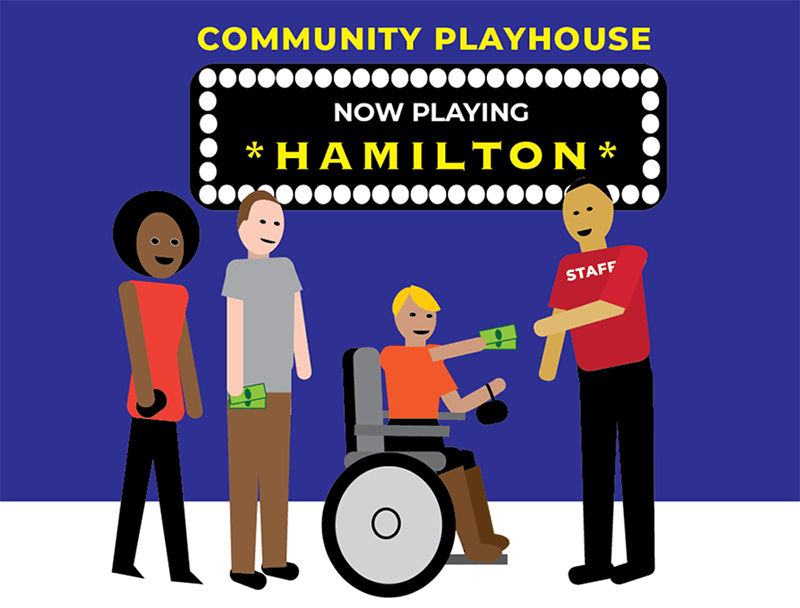
Getting a job is a great way to gain more independence and become more involved in your community.

Finding and getting a job, however, can sometimes feel confusing, but it doesn't have to be!
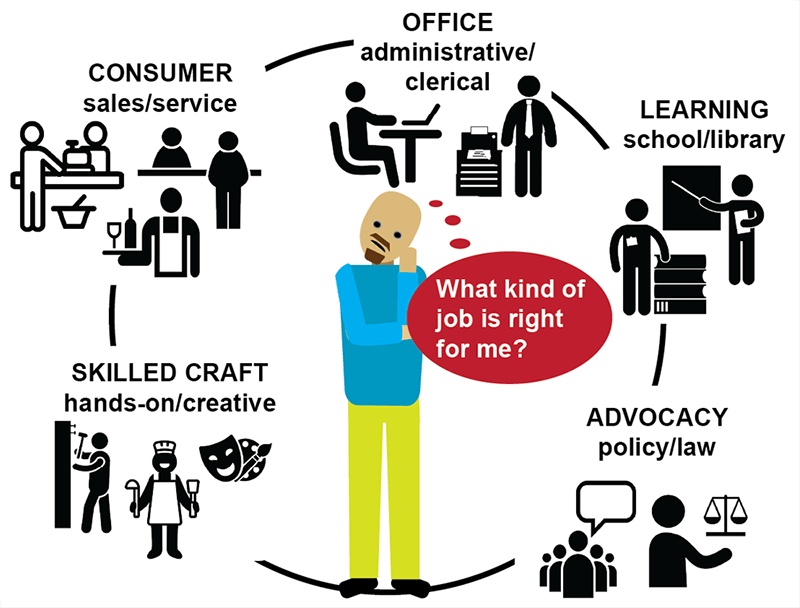
There are many different jobs out there, and it is important to take some time to think about what you might like to do.

Think about what skills you have to offer. For example, people who love talking to people might want to work in customer service.

Talk to family and friends about their jobs and see if they have any suggestions for you. Support from those around you is always helpful in guiding you through the process.

Once you have an idea of the type of work you want to do, the next step is to look for jobs. You can look for jobs in many ways.
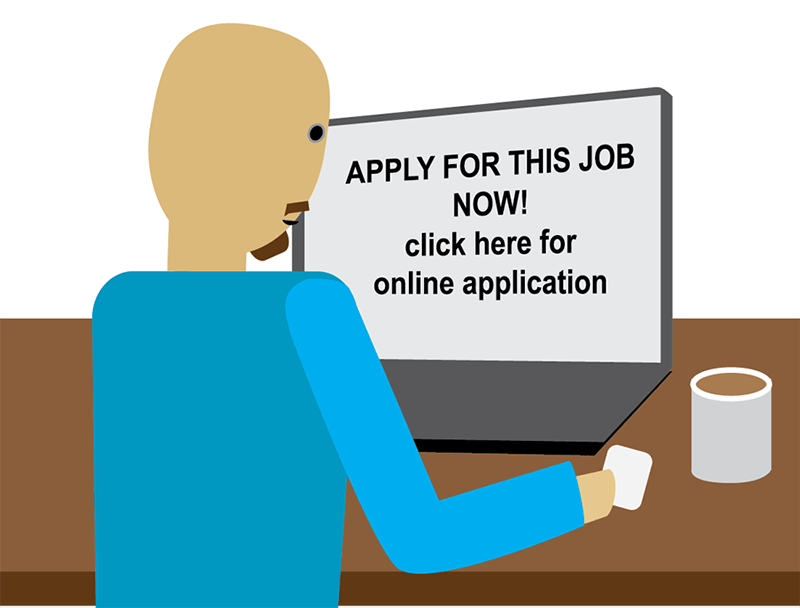
Searching online for jobs is a simple way to see what organizations or businesses are hiring near you. Most of the time, you can apply online.
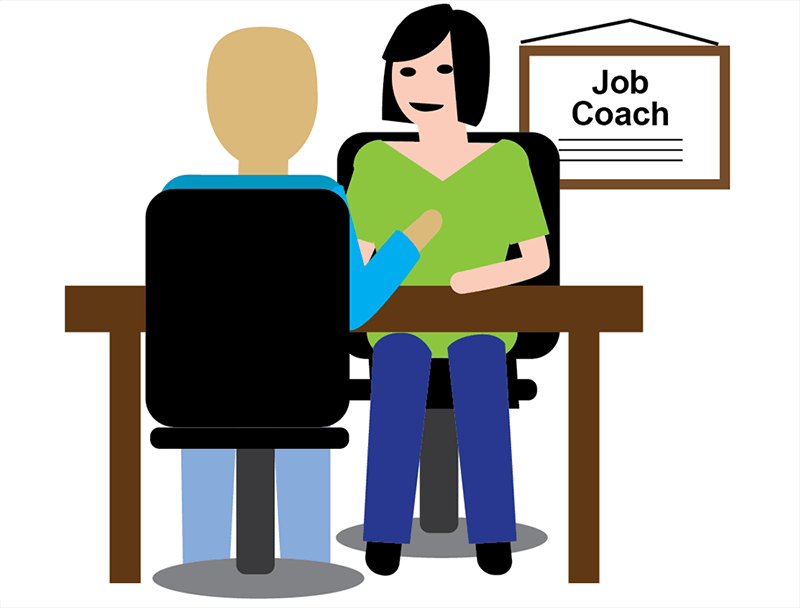
Another option is talking to a job coach. They can suggest jobs for you and help you get these jobs.
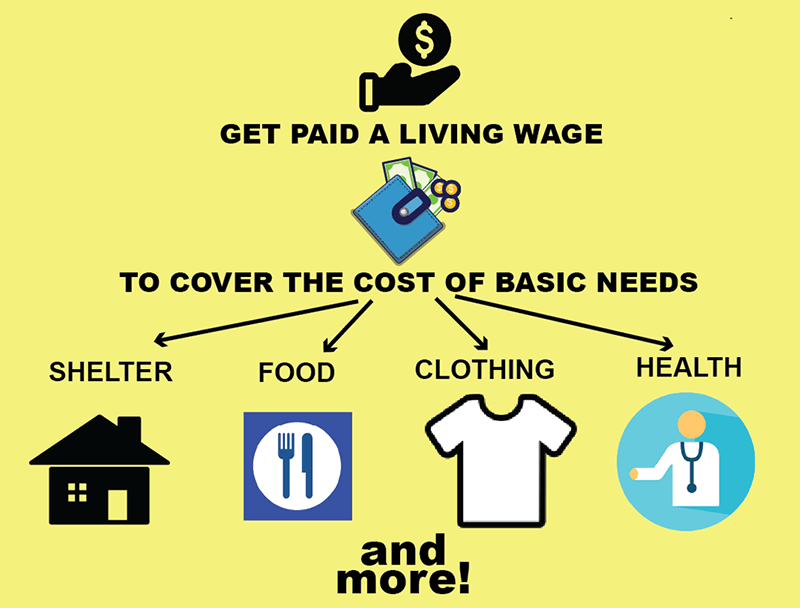
A great part about working is that you get paid for your time and energy. It is very important that you be paid fairly for your job. You should always earn at least a “living wage”— enough money to support your basic needs like food, shelter, health, clothing and more.
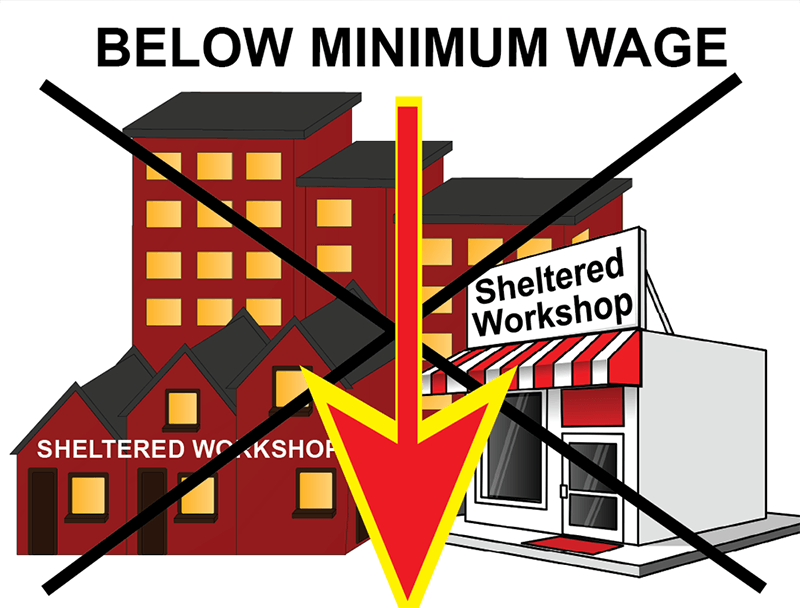
Some places, like sheltered workshops, hire people with disabilities below the minimum wage. Be sure to tell your job coach you are not interested in jobs that pay below the minimum. There are many other options.
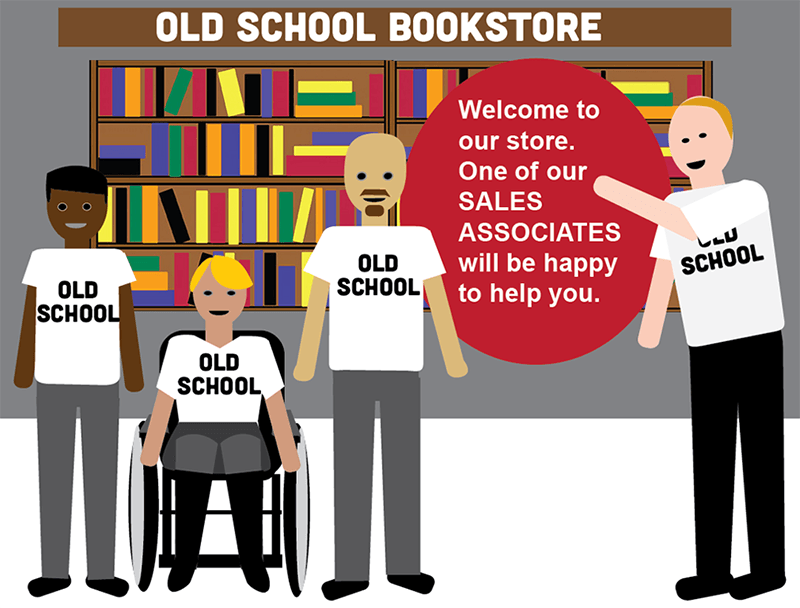
The Home and Community Based Services (HCBS) Final Rule, considers jobs that are integrated and involved in the community most important. This means that you should work alongside people with and without disabilities.
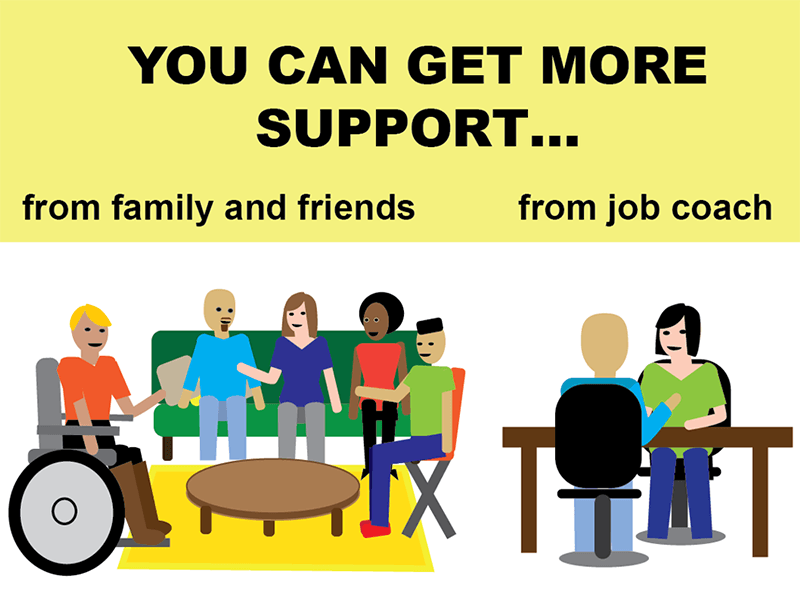
Working, and being paid for your work, can be extremely rewarding. If you feel you need more support in finding and/or keeping a job, you can talk to your friends, family, or job coach. You can also contact the Office of Vocational Rehabilitation (OVR) at 1-800-442-6351
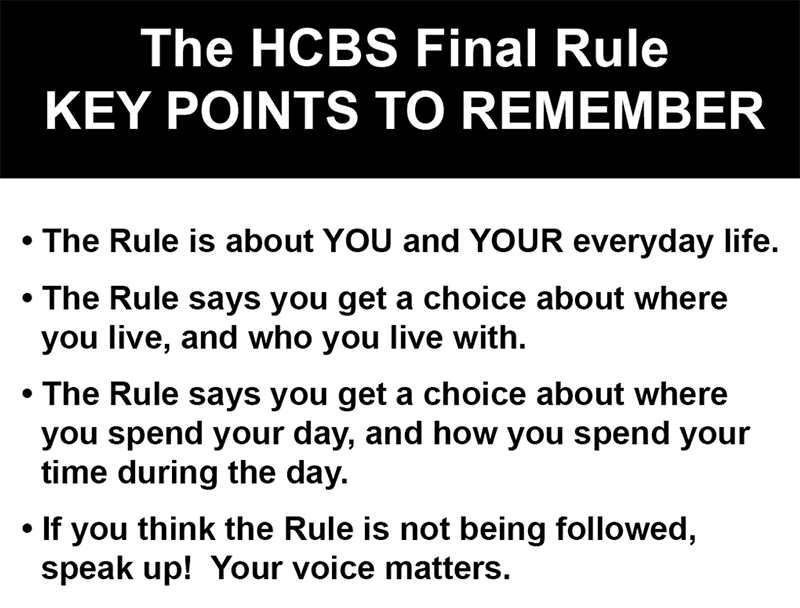
The HCBS Final Rule key points to remember: The Rule is about YOU and YOUR everyday life. The Rule says you get a choice about where you live, and who you live with. The Rule says you get a choice about where you spend your day, and how you spend your time during the day. If you think the Rule is not being followed, speak up! Your voice matters. For more information or help with this Rule, you can email [click-for-email].
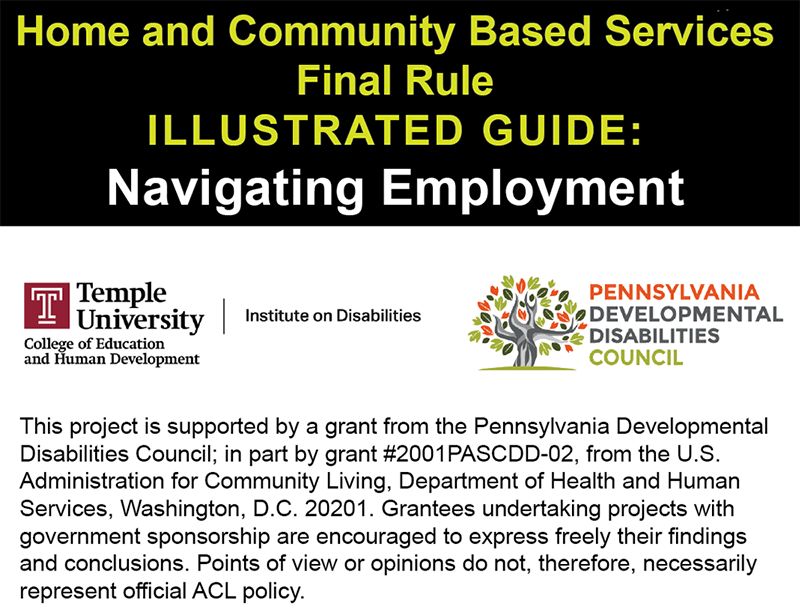
This project is supported by a grant from the Pennsylvania Developmental Disabilities Council; in part by grant #2001PASCDD-02, from the U.S. Administration for Community Living, Department of Health and Human Services, Washington, D.C. 20201. Grantees undertaking projects with government sponsorship are encouraged to express freely their findings and conclusions. Points of view or opinions do not, therefore, necessarily represent official ACL policy.
